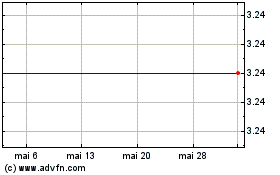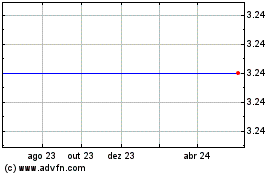Mutual Fund Summary Prospectus (497k)
28 Dezembro 2012 - 8:07PM
Edgar (US Regulatory)

|
|
|
|
|
|
|
|
|

|
|
Dreyfus Opportunistic U.S. Stock Fund
|
|
|
Summary Prospectus
January
1, 2013
|
|
|
|
|
|
|
Class
Ticker
A
DOSAX
C
DOSCX
I
DOSIX
|
Before
you invest, you may want to review the fund's prospectus, which contains more information about the fund
and its risks. You can find the fund's prospectus and other information about the fund, including the
statement of additional information and most recent reports to shareholders, online at
www.dreyfus.com/funddocuments
.
You can also get this information at no cost by calling 1-800-DREYFUS (inside the U.S. only) or by sending
an e-mail request to
info@dreyfus.com
. The fund's prospectus and statement of additional
information, dated January 1, 2013 (each as revised or supplemented), are incorporated by reference into
this summary prospectus.
The
fund seeks long-term capital appreciation.
This
table describes the fees and expenses that you may pay if you buy and hold shares of the fund. You may
qualify for sales charge discounts if you and your family invest, or agree to invest in the future, at
least $50,000 in certain funds in the Dreyfus Family of Funds. More information about these and other
discounts is available from your financial professional and in the Shareholder Guide section on page
8 of the Prospectus and in the How to Buy Shares section and the Additional Information About How to
Buy Shares section on page II-1 and page III-1, respectively, of the fund's Statement of Additional Information.
Class A shares bought without an initial sales charge as part of an investment of $1 million or more
may be charged a deferred sales charge of 1.00% if redeemed within one year.
|
|
|
|
|
|
Shareholder Fees
(fees paid directly from
your investment)
|
|
|
Class A
|
Class C
|
Class
I
|
|
Maximum sales charge (load) imposed on purchases
(as a percentage of offering
price)
|
5.75
|
none
|
none
|
|
Maximum deferred
sales charge (load)
(as a percentage of lower of purchase or sale price)
|
none
|
1.00
|
none
|
|
|
|
|
|
|
Annual Fund Operating Expenses
(expenses
that you pay each year as a percentage of the value of your investment)
|
|
|
Class
A
|
Class
C
|
Class
I
|
|
Management fees
|
.75
|
.75
|
.75
|
|
Distribution (Rule 12b-1) fees
|
none
|
.75
|
none
|
|
Other
expenses
(including shareholder services fees)
|
6.76
|
6.59
|
6.38
|
|
Total annual fund operating expenses
*
|
7.51
|
8.09
|
7.13
|
|
Fee waiver and/or expense reimbursement
|
(6.31)
|
(6.14)
|
(6.18)
|
|
Total annual fund operating expenses
(less fee waiver and/or expense reimbursement)
|
1.20
|
1.95
|
.95
|
|
*
The Dreyfus Corporation
has contractually agreed, until February 1, 2014, to waive receipt of its fees and/or assume the expenses
of the fund so that the expenses of none of the classes (excluding Rule 12b-1 and distribution plan fees,
shareholder services plan fees, taxes, interest expense, brokerage commissions, commitment fees on borrowings
and extraordinary expenses) exceed 0.95%. On or after February 1, 2014, The Dreyfus Corporation may
terminate this expense waiver at any time.
|
|
|
|
|
6316SP0113
|

|
Example
The
Example is intended to help you compare the cost of investing in the fund with the cost of investing
in other mutual funds. The Example assumes that you invest $10,000 in the fund for the time periods
indicated and then redeem all of your shares at the end of those periods. The Example also assumes that
your investment has a 5% return each year and that the fund's operating expenses remain the same. The
one-year example and the first year of the three-, five- and ten-years examples are based on net operating
expenses, which reflect the expense waiver/reimbursement by The Dreyfus Corporation. Although your actual
costs may be higher or lower, based on these assumptions your costs would be:
|
|
|
|
|
|
|
|
1 Year
|
3 Years
|
5 Years
|
10
Years
|
|
Class A
|
$690
|
$2,123
|
$3,485
|
$6,601
|
|
Class C
|
$298
|
$1,814
|
$3,332
|
$6,735
|
|
Class I
|
$97
|
$1,549
|
$2,940
|
$6,167
|
You would pay the following
expenses if you did not redeem your shares:
|
|
|
|
|
|
|
|
1
Year
|
3 Years
|
5 Years
|
10 Years
|
|
Class
A
|
$690
|
$2,123
|
$3,485
|
$6,601
|
|
Class C
|
$198
|
$1,814
|
$3,332
|
$6,735
|
|
Class
I
|
$97
|
$1,549
|
$2,940
|
$6,167
|
Portfolio
Turnover
The fund pays transaction costs, such as commissions, when it buys and sells securities
(or "turns over" its portfolio). A higher portfolio turnover may indicate higher transaction costs and
may result in higher taxes when fund shares are held in a taxable account. These costs, which are not
reflected in annual fund operating expenses or in the example, affect the fund's performance. During
the most recent fiscal year, the fund's portfolio turnover rate was 46.51% of the average value of its
portfolio.
Principal Investment Strategy
To
pursue its goal, the fund normally invests at least 80% of its net assets, plus any borrowings for investment
purposes, in stocks of publicly traded companies located in the United States. The fund may invest in
the stocks of companies of any market capitalization and may hold growth or value stocks or a blend of
both. The fund's portfolio construction combines a fundamental, bottom-up research process with macro
insights and risk management. The fund's portfolio managers, supported by a team of research analysts,
use a disciplined opportunistic investment approach to identify stocks of companies that the portfolio
managers believe are trading materially below their intrinsic market value, have strong or improving
fundamentals and have a revaluation catalyst.
The fund seeks exposure to stocks and sectors
that the fund's portfolio managers perceive to be attractive from a valuation and fundamental standpoint.
Portfolio position sizes and sector weightings reflect the collaborative investment process among the
fund's portfolio managers and research analysts. The portfolio managers also assess and manage the overall
risk profile of the fund's portfolio.
An investment in the fund is not a bank deposit. It is not insured or guaranteed by
the Federal Deposit Insurance Corporation (FDIC) or any other government agency. It is not a complete
investment program. The fund's share price fluctuates, sometimes dramatically, which means you could
lose money.
·
Risks of stock investing
. Stocks generally fluctuate more in value than bonds
and may decline significantly over short time periods. There is the chance that stock prices overall
will decline because stock markets tend to move in cycles, with periods of rising prices and falling
prices. The market value of a stock may decline due to general weakness in the stock market or because
of factors that affect the company or its particular industry.
·
Market sector risk.
The fund may significantly
overweight or underweight certain companies, industries or market sectors, which may cause the fund's
performance to be more or less sensitive to developments affecting those companies, industries or sectors.
·
Growth and value stock
risk.
By investing in a mix of growth and value companies, the fund assumes the risks of both.
Investors often expect growth companies to increase their earnings at a certain rate. If these expectations
are not met, investors can punish the stocks inordinately, even if earnings do increase. In addition,
growth stocks typically lack the dividend yield that can cushion stock prices in market downturns. Value
stocks involve the risk that they may never reach their expected full market
|
|
|
|
Dreyfus Opportunistic U.S. Stock
Fund Summary
|
2
|
value, either because the market fails to recognize the stock's
intrinsic worth, or the expected value was misgauged. They also may decline in price even though in
theory they are already undervalued.
·
Small and midsize company risk.
Small
and midsize companies carry additional risks because the operating histories of these companies tend
to be more limited, their earnings and revenues less predictable (and some companies may be experiencing
significant losses), and their share prices more volatile than those of larger, more established companies.
The shares of smaller companies tend to trade less frequently than those of larger, more established
companies, which can adversely affect the pricing of these securities and the fund's ability to sell
these securities.
·
Liquidity risk.
When there is little
or no active trading market for a security, the fund may not be able to sell the security in a timely
manner at its perceived value, which could cause the fund's share price to fall.
Since
the fund has less than one full calendar year of performance, past performance information is not included
in the summary prospectus. Annual performance returns provide some indication of the risks of investing
in the fund by showing changes in performance from year to year. Comparison of fund performance to an
appropriate index indicates how the fund's average annual returns compare with those of a broad measure
of market performance. The fund's past performance (before and after taxes) is not necessarily an indication
of how the fund will perform in the future. Recent performance is available at
www.dreyfus.com
.
The fund's investment adviser
is The Dreyfus Corporation (Dreyfus). Investment decisions for the fund have been made since the fund's
inception by a team of investment professionals led by David A. Daglio, CFA and Elizabeth Slover. Mr.
Daglio is a senior managing director and the lead portfolio manager on the U.S. opportunistic value strategies
at The Boston Company Asset Management, LLC (TBCAM), an affiliate of Dreyfus. Ms. Slover is a senior
managing director and the director of the core research team at TBCAM. Mr. Daglio and Ms. Slover also
are employees of Dreyfus and manage the fund in that capacity.
Purchase and Sale of Fund Shares
In
general, the fund's minimum initial investment is $1,000 and the minimum subsequent investment is $100.
You may sell (redeem) your shares on any business day by calling 1-800-DREYFUS (inside the U.S. only)
or by visiting
www.dreyfus.com
. If you invested in the fund through a third party,
such as a bank, broker-dealer or financial adviser, or in a 401(k) or other retirement plan, you may
mail your request to sell shares to Dreyfus Institutional Department, P.O. Box 9882, Providence, Rhode
Island 02940-8082. If you invested directly through the fund, you may mail your request to sell shares
to Dreyfus Shareholder Services, P.O. Box 9879, Providence, Rhode Island 02940-8079
The fund's distributions are taxable as ordinary income or capital
gains, except when your investment is through an IRA, 401(k) plan or other tax-advantaged investment
plan (in which case you may be taxed upon withdrawal of your investment from such account).
Payments
to Broker-Dealers and Other Financial Intermediaries
If you purchase shares through
a broker-dealer or other financial intermediary (such as a bank), the fund and its related companies
may pay the intermediary for the sale of fund shares and related services. These payments may create
a conflict of interest by influencing the broker-dealer or other intermediary and your salesperson to
recommend the fund over another investment. Ask your salesperson or visit your financial intermediary's
website for more information.
|
|
|
|
Dreyfus Opportunistic U.S. Stock Fund Summary
|
3
|
This
page has been left intentionally blank.
|
|
|
|
Dreyfus Opportunistic U.S. Stock Fund Summary
|
4
|
Reeds (NASDAQ:REED)
Gráfico Histórico do Ativo
De Jun 2024 até Jul 2024

Reeds (NASDAQ:REED)
Gráfico Histórico do Ativo
De Jul 2023 até Jul 2024
